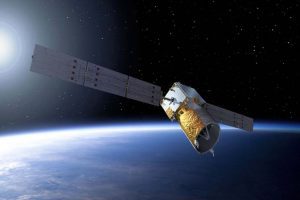Iceland is working on an ambitious and innovative project: harvesting solar energy. In addition to harnessing its abundant geothermal resources to supply most of its energy demand, the European country began this project hand in hand with the Icelandic company Reykjavín Energy and the organization Transition Labs, along with the British company Space Solar.
The goal of these companies is to send satellites into space to continuously capture solar energy and then transmit it to Earth. Although the project is still in the development stages, the possibilities of being able to take advantage of solar energy without interruptions would be a revolutionary development in the production of clean energy.
Experts plan to send a 70.5-ton, 400-meter-diameter satellite into space, designed to be placed in a medium Earth orbit. From there, it will be able to capture solar energy without limitations. This energy will be converted into a high-frequency wave beam, which will be transmitted to receiving stations on Earth to be converted into electricity and distributed through supply networks.
For satellite transport, the leading companies in the project will use a reusable rocket called SpaceX’s Starship, which has a payload capacity and lower launch cost that would help make the project feasible. According to estimates, at least six satellites should be operational by 2035, with the goal of generating 15 gigawatts of energy capacity to be distributed among several countries.

What are the advantages of this innovative project?
According to experts, harvesting solar energy in space brings greater benefits than traditional terrestrial systems. Being outside the atmosphere, these satellites can capture sunlight 24 hours a day. This means that the energy supply will be constant and predictable, becoming a more reliable alternative compared to terrestrial solar energy.
In fact, being able to capture solar energy from space will allow to harvest 100 times more energy than what is obtained on Earth. Its high efficiency will help position it as a viable solution for countries with limited access to sunlight or high energy demands.

Challenges of the project
Being an innovative project does not mean it does not have its limitations and challenges. The high launch and construction costs are one of the challenges of this project, as each 20 MW pilot plant requires an initial investment of $800 million. Another challenge is transportation, as each satellite weighs thousands of tons and needs to be placed in a medium orbit.
Furthermore, there is the possibility of accumulating space debris, which is why Space Solar satellites will operate in a less congested medium orbit, although their presence may increase the chances of collisions, which is a constant concern in the space sector.
Have you visited our YouTube channel yet? Subscribe now!

